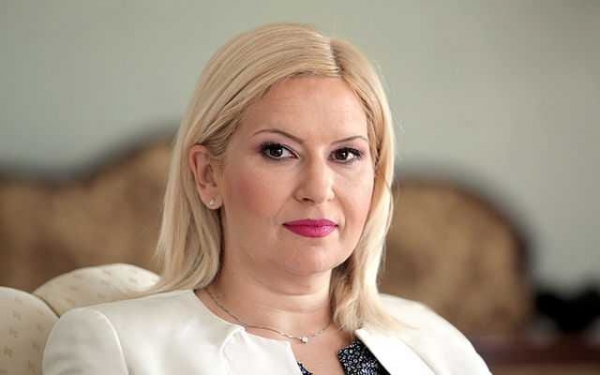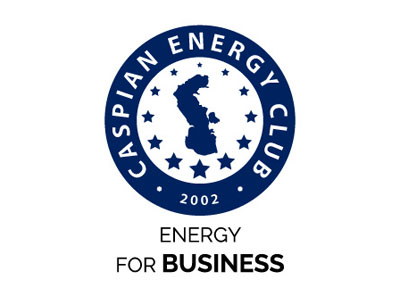Caspian Energy (CE): Madam Mihajlovic, how deep is Serbia’s energy network integrated into the Balkan energy network?
Zorana Mihajlovic, Deputy Prime Minister of the Republic of Serbia and the Minister of Mining and Energy:Serbia’s electricity transmission system is well connected to all eight neighboring countries by 400 kV transmission lines. With the construction of the TransBalkan Corridor, with a total length of 321 km, in the construction of which we are investing EUR 157 million, we will achieve greater security of supply for domestic consumers, we will get a kind of an “energy highway” that will go through Serbia and increase supply security in all connected countries. A new additional transmission line to Romania has already been built within the Trans-Balkan Corridor, and additional i n t e r c o n n e c t i o n s with Montenegro and Bosnia and Herzegovina are being prepared. All this will enable better regional connection, development of the electricity market in the region, and will increase the possibilities and reduce the costs of integrating renewable energy into electricity systems. In the future, it is planned to further strengthen the transmission capacities with new interconnections to Bulgaria, Romania, Hungary and Croatia, in line with the development of the market in the region and the increase in the share of solar and wind energy.
So, our vision is Serbia connected with its neighbors, which will be an important energy corridor for both electricity and gas.
In the gas sector, the goal is to connect with all neighboring countries via gas interconnections. This will mean that every gas from every source reaching Serbia will at the same time raise the energy security of the entire region.
Works on the construction of the gas interconnection Serbia-Bulgaria will commence this year (Nis-Dimitrovgrad gas pipeline) and should be operational in 2023 connecting us with the gas pipelines on the Southern Gas Corridor and with LNG terminals in Greece, but also with a project that is very important for the energy security of the entire region, and that is the Eastern Mediterranean gas pipeline. The realization of this project would enable gas from gas fields in the eastern Mediterranean to reach Serbia and the region via Cyprus, Crete, Greece and Bulgaria and the future Nis-Dimitrovgrad gas pipeline. Also, a new interconnection with Republika Srpska, i.e. Bosnia and Herzegovina, will be built, which will connect that part of the region to the Balkan Stream gas pipeline, and in the future we intend to have gas interconnections with Montenegro, Romania and Croatia. In the future, after the completion of the Eastern Mediterranean project, it will be possible to acquire gas from the coastal reserves of the Leviathan field, i.e. Cyprus and Israel, which is important for the energy security of Serbia and the region.
CE: Is it possible to fully switch to solar energy?
Zorana Mihajlovic:As in any country with a high share of coal in electricity production such as Serbia - about 67%, its replacement will require several decades. In the process of energy transition, key goals must be met: ensuring energy security and secure energy supply and a complete coverage of Serbia’s electricity needs coming from its own production.
In the past six months, the Ministry of Mining and Energy has intensively embarked on two major interventions that are fundamentally changing the energy system in Serbia. The first one is the amendment of the legal framework, and the second is the preparation of the most important strategic and planning documents related to the energy sector.
Laws on energy efficiency and the use of renewable energy sources have been adopted and the Law on Energy has been amended, which, together with the previously adopted Law on Climate Change, provided a new legal framework more favorable for both citizens and investors, harmonized with relevant EU regulations and the Paris Climate Agreement.
The integrated national energy and climate plan, whose development began with the new Energy Development Strategy, will determine the goals, structure and dynamics of change for the next three decades, until 2050. Combating climate change and environmental protection are key pillars in these changes. It is indisputable that they, as in the whole world, will lead to a gradual reduction in the use of coal and its replacement by low-carbon, green technologies and energy sources.
Higher utilization of RES, and above all solar energy, is one of the important factors of energy security in the future, but of course, not the only one. The share of electricity produced from coal in the energy mix will gradually decrease in the coming decades, which will be replaced by energy produced from new capacities, primarily medium and large hydropower plants, solar power plants, wind power plants, biomass, as well as gas power plants.
Also, additional energy storage capacities will be needed, primarily in reversible hydropower plants, and later in batteries. As a special part of the new energy strategy, the hydrogen strategy will be represented in order to gradually create conditions for the use of hydrogen energy in accordance with its commercial availability.
The new investment plan that the Ministry is preparing and which is directly related to the energy transition of Serbia, includes projects in all areas under the ministry worth close to EUR 16 billion. Among other things, in the field of electricity, the planned investments amount to approximately EUR 6.6 billion, and the value of projects in RES is approximately EUR 4.4 billion, primarily in solar power plants and wind power plants. We will soon have all projects in one place in the project book where all interested investors will be able to see what our priorities are, what we plan as public investments, and where we expect active participation from the private sector.
CE: How are water resources used in the country? How attractive are they for investments?
Zorana Mihajlovic:Although very important in the energy mix, because currently approximately 30 percent of electricity comes from hydroelectric power plants, the hydro potential of Serbia has not been fully used. It is the new medium and large hydropower plants that will play an important role in meeting the energy needs of Serbia in the coming decades, bearing in mind the gradual reduction of electricity production from coal.
The plan is to build new and revitalize existing hydropower plants with a total capacity of 3.5 GW, which includes the construction of a reversible hydropower plant (RHE) Djerdap, on the river Danube, and RHE Bistrica, as well as new HPPs of medium capacity on the rivers Drina, Ibar and Morava.
Also, the production of electricity from existing HPPs will increase, through reconstruction and rehabilitation, which, according to the analysis of the World Bank, is the most profitable way to reduce emissions.
CE: Which sectors of the economy are the most liquid for investment, causing an increase in energy demand?
Zorana Mihajlovic:Serbia is an economically stable country, which, after a temporary slowdown in 2020 as a result of the COVID-19 pandemic, expects economic growth of six percent this year. In previous years we have done a lot to improve our business environment, as evidenced by the Doing Business list of the World Bank, where Serbia has advanced from 186th to 9th place in just a few years.
The energy and mining sectors should be among the drivers of economic growth in the coming years, and contribute more signicantly to GDP. The creation of a more favorable environment for investments was one of the main reasons for the adoption of new laws, which, among other things, shortened the procedures for issuing solutions and permits, both in energy and mining.
Investments in new energy capacities are also a condition for new investments in all other industries. All projections say that electricity consumption will certainly grow in the coming decades, and, given the process of energy transition, our goal is to ensure, through new investments, that Serbia is energy safe and has enough energy for accelerated economic growth and development. In addition, the energy transition in Serbia will inevitably lead to a gradual transition to electricity, for example, in transport, to cover heat needs and other sectors, i.e. the share of electricity in total energy, and thus further increase its consumption.
CE: How does climate change affect the economy of Serbia and the region as a whole?
Zorana Mihajlovic:Climate change is affecting all world economies, not only Serbia and the region of Southeast Europe. Speaking of Serbia, this year represents a turning point in the ght against climate change. In addition to the law in the field of energy, the Law on Climate Change was adopted this year, and a national integrated plan for climate and energy until 2030, new strategies for energy development until 2050, as well as a strategy for low-carbon development will be drafted. In this way, the foundation will be laid for the major changes that will take place in our energy sector in the next 20 and 30 years, with the goal of making our development climate-neutral. One of the main goals we have set in that sense is to increase the share of RES in total energy production to 40 percent by 2040, and to at least 50 percent by 2050.
The ability of Serbia, as well as some other countries in the region with a similar structure of the energy sector, to follow the EU energy and climate goals and the Green Agreement, will depend on the availability of EU financial support, proportional to the support received by the EU members with high coal share and similar level of economic development.
Thank you for the interview





